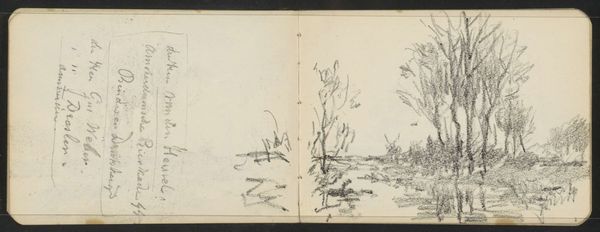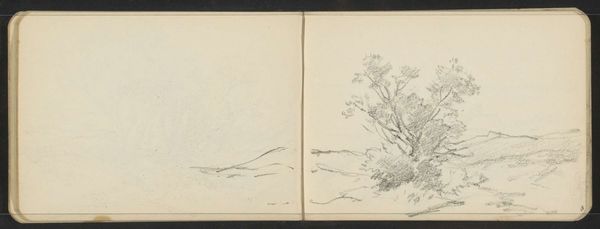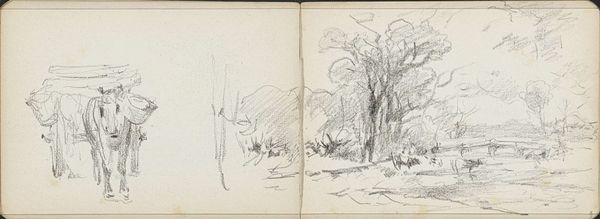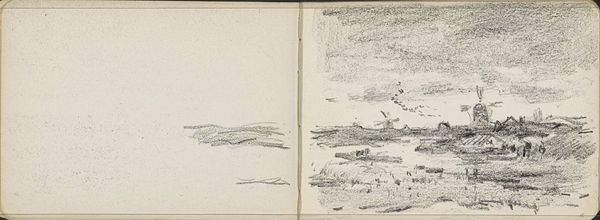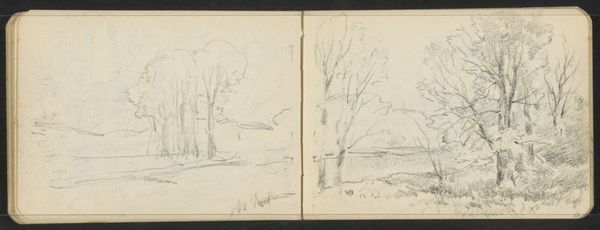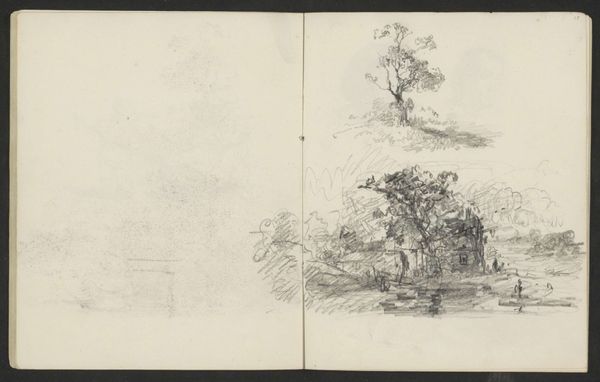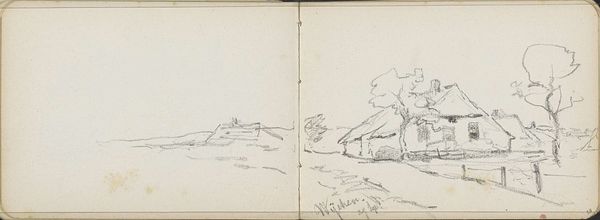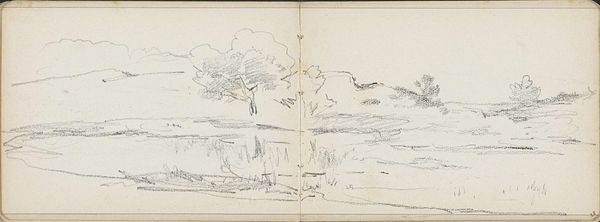
Dimensions: height 115 mm, width 160 mm
Copyright: Rijks Museum: Open Domain
Curator: Willem Cornelis Rip created this work, "Landschap met bomen," sometime between 1914 and 1916. It appears to be a pen and pencil drawing. Editor: Ah, a quick study! It’s that in-between time in the late afternoon when the sun dips low, stretching shadows long and thin. You can almost feel the quiet stillness settling over the land. Curator: I'm interested in how Rip uses this landscape to perhaps explore ideas around place and memory. Considering the time period, during the first World War, what impact might such conflict and violence have on our understanding of our relationship with the land, and perhaps even ideas of safety and identity? Editor: That's fascinating! And for me, personally, it makes me think of how landscapes hold layers of stories. Each line and mark he makes carries with it a kind of personal experience of witnessing something that becomes universal. It invites a sense of empathy. Curator: I agree, and this empathetic invitation is reinforced in part by its intimate, almost portable, nature as a sketch found in a notebook. What social position does that intimate point of view assume? How might we, the viewers, imagine this position as something other than white and male, opening the space to experiences or points of view usually marginalized or excluded? Editor: Right. Because with a sketch, you catch a raw, unfiltered essence. You know? Like catching the wind. And I think this openness of media lends itself particularly well to an experience beyond specific subjectivities; one almost becomes lost to observation itself. Curator: Thinking about materiality, I wonder what type of pencil and paper Rip would have used? How do the physical qualities of those materials contribute meaning to our experience of the work? And what considerations must we address regarding material access when thinking about class? Editor: Those rough strokes evoke a sense of urgency, right? Or at least some quickness. I wonder what else he drew that day? What other vistas and visions filled that notebook? Curator: It invites curiosity! The type that drives both artistic expression and historical research! Editor: Absolutely. A little treasure that fits right in your pocket!
Comments
No comments
Be the first to comment and join the conversation on the ultimate creative platform.
